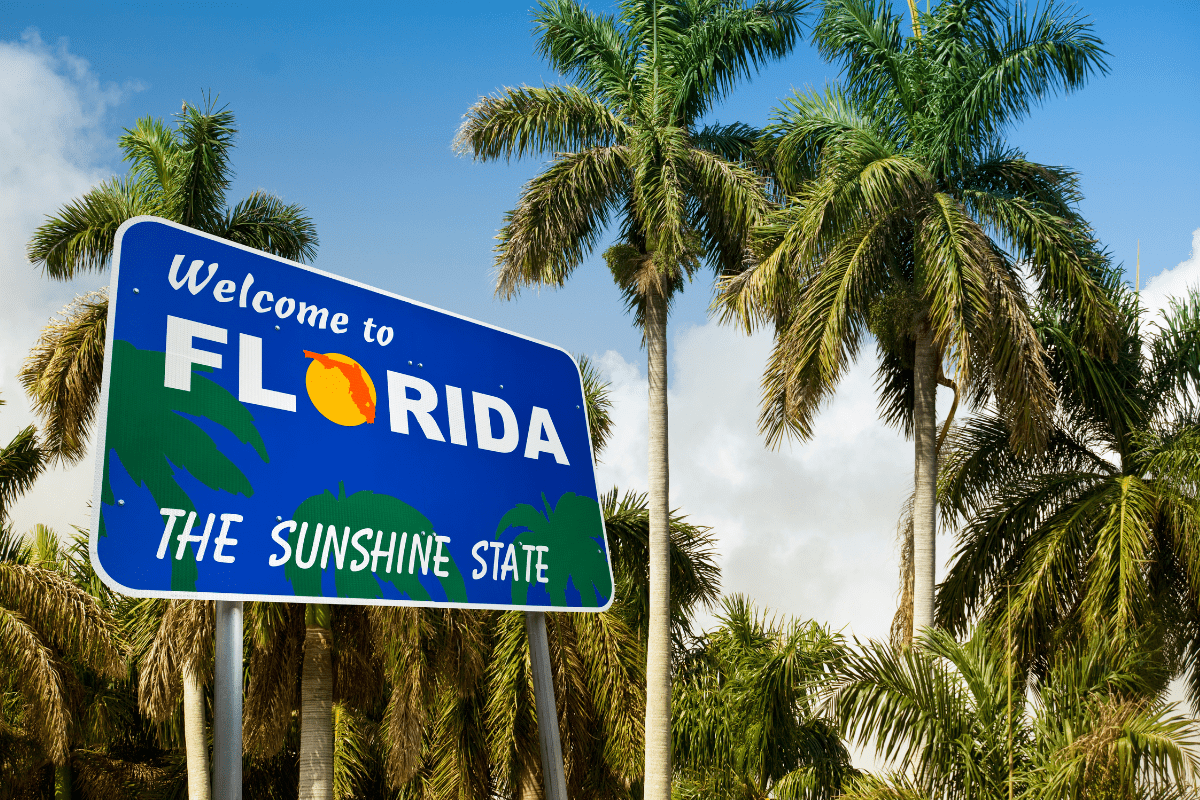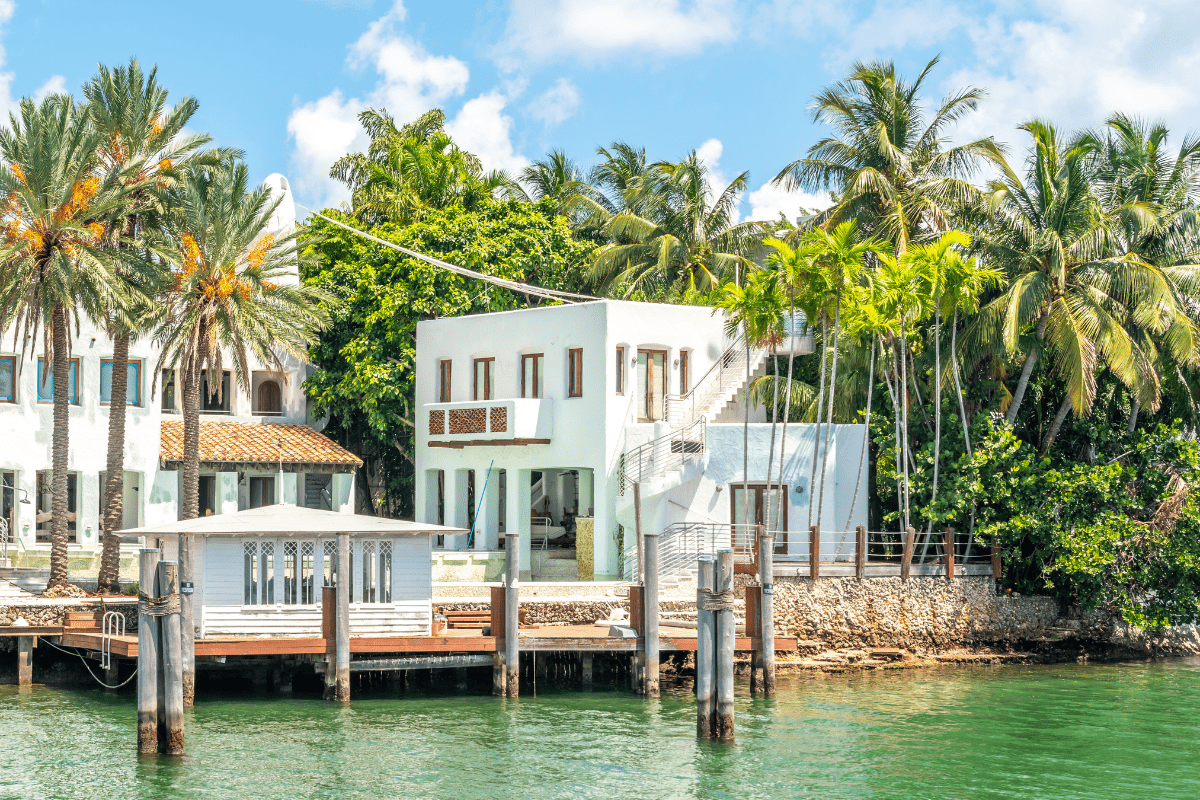Ever wonder why Florida chose a butterfly that eats pollen or a gem that doesn't even exist in the state? Florida's collection of over 44 official symbols tells the wildest story of any state… from Spanish conquistadors to space launches, from nearly extinct panthers to billion-dollar strawberries.
The Big Three: Florida's Most Famous Symbols
Every state has its holy trinity of symbols, but Florida's choices pack some serious surprises. These three have represented the Sunshine State for decades, though not without their share of drama.
The mockingbird controversy
The Northern Mockingbird has been Florida's state bird since 1927, chosen for what legislators called its "melody of matchless charm." This little gray showoff can mimic up to 200 different sounds, everything from cardinal calls to car alarms. I once heard one perfectly imitate my neighbor's ringtone at 3 AM… charming indeed.
Here's where it gets spicy: Florida shares the mockingbird with four other states. That's like five kids showing up to school in the same outfit. Not a good look. Recent legislative battles have tried to replace it with either the Florida scrub jay (which actually only lives in Florida) or the flamingo (which just started showing up wild again). The mockingbird keeps winning, probably by mimicking the votes.
Orange you glad it's our flower?
The orange blossom became Florida's state flower in 1909, back when Florida literally grew more oranges than any entire country. These small white flowers smell like heaven mixed with sunshine, and if you've never experienced a grove in full bloom, add it to your bucket list immediately.
Florida went full citrus-crazy and created what I call the "orange trilogy":
- State flower: Orange blossom
- State fruit: Orange (obviously)
- State beverage: Orange juice
Unfortunately, the citrus industry has taken a beating. Production has plummeted 92% since 2003 thanks to diseases and hurricanes. Those free OJ samples at the welcome centers? Ancient history.
The palm that could
The sabal palm (also called cabbage palm) won its state tree title in 1953 after what historians describe as "heated debate." State foresters wanted the slash pine because money, but the Florida Federation of Garden Clubs fought for the palm's cultural significance. Garden clubs: 1, Foresters: 0.
Native Americans called it the "tree of life" because you could eat it, build with it, and make like 47 different things from it. These palms laugh at hurricanes, tolerate salt spray, and can live 200 years. They're basically the Chuck Norris of trees.
Wildlife Wonders: Seven Animals That Rule Florida
Florida's animal symbols read like a guest list for the world's coolest nature documentary. Each one tells a story of survival, recovery, or just being ridiculously Floridian.
The comeback cat
The Florida panther became our state animal in 1982 after 500,000 students voted statewide. Democracy in action, folks. These cats nearly went extinct with only 20-30 left in the 1970s. Today? Between 120 and 230 roam south Florida.
Fun fact: Male panthers need 200-square-mile territories. That's bigger than Barbados. No wonder they have road rage issues… vehicle strikes remain their number one threat.
Manatees: The original Florida Man
The West Indian manatee snagged marine mammal status in 1975. These 1,000-pound potatoes with flippers are more closely related to elephants than cows, despite the "sea cow" nickname. They can hold their breath for 20 minutes, which is 19 minutes and 45 seconds longer than me in a swimming pool.
The recent manatee crisis breaks my heart. Pollution destroyed their seagrass buffet in the Indian River Lagoon, killing 1,255 manatees between 2020-2022. That's like losing the entire population of a small town.
Gator gonna gator
The American alligator became state reptile in 1987, because what else would it be? A gecko? These prehistoric CEOs of the swamp were once endangered but recovered so well that Florida now has controlled harvests yielding 45,000 hides annually.
Alligator achievements worth noting:
- Create "gator holes" (wetland lifesavers during droughts)
- Go through 3,000 teeth per lifetime
- Can survive freezing by doing "snorkeling"
- Make terrifying bellowing sounds during mating season
- Basically unchanged for 8 million years
The butterfly that breaks all the rules
The zebra longwing butterfly joined the team in 1996. This striped rebel is the only butterfly that eats pollen, which is like being the only human who eats tree bark for longevity. It works though… they live up to 6 months instead of the typical 2-4 weeks.
Fish tales
Florida claimed two state fish because we're extra like that. The Florida bass (formerly largemouth bass, rebranded in 2024) grows bigger here than anywhere else. It supports a $2.4 billion fishing industry, which explains why people wake up at 4 AM to sit in boats.
The Atlantic sailfish represents our saltwater side. These speed demons hit 60 mph, making them one of the ocean's fastest fish. They're basically the Ferraris of the sea, complete with a fancy fin spoiler.
The horse that history forgot
The Florida Cracker horse became official in 2008. These tough little horses descended from Spanish horses brought over 500 years ago. They nearly went extinct in the 1930s before a few dedicated families saved them. Now that's what I call a long-term investment.
Geological Gems and Natural Treasures
Florida's geological symbols prove you don't need mountains to have cool rocks. We've got ancient coral, monster shells, and a gem that's literally out of this world.
Shell shock
The horse conch has been our state shell since 1969. Growing up to 24 inches, it's the Godzilla of American gastropods. Recent University of South Florida research dropped a bombshell: these giants only live 8-10 years, not 50 like everyone thought.
The population numbers are scarier than a category 5 hurricane:
- 1996: 14,511 harvested commercially
- 2020: 67 harvested
- My reaction: Yikes
Coral that rocks
Agatized coral pulls double duty as both state stone and state fossil since 1979. This gorgeous rock formed when silica replaced calcium carbonate in ancient coral reefs 20-30 million years ago. It's like nature's way of 3D printing fossils.
You can find it in three main spots, though the legendary blue specimens from Ballast Point (now closed) sell for serious money. It's the Bitcoin of Florida rocks.
The moon shot gem
Here's peak Florida logic: Our state gem is moonstone (1970), which doesn't exist naturally in Florida. At all. Legislators chose it to commemorate the Apollo 11 launch from Kennedy Space Center. We literally claimed a gem from space because we sent people there. If that's not the most Florida thing ever, I don't know what is.
Dirt with personality
Myakka fine sand became state soil in 1989, covering 1.5 million acres. The name means "big waters" in Native American language, which is ironic for soil but makes sense when you realize it floods seasonally. This sandy, temperamental dirt somehow supports both pristine flatwoods and massive agricultural operations.
Highway happiness
Coreopsis wildflowers got the official nod in 1991. These cheerful yellow daisies bloom along over 1,000 miles of Florida highways, earning the nickname "paths of sunshine." Twelve species grow wild here, including two found nowhere else on Earth. They're basically Florida's version of follow the yellow brick road.
Cultural Flavors: The Tasty and Controversial
Florida's cultural symbols blend agricultural pride with enough controversy to fill a telenovela. Grab some pie and juice while I explain.
The beverage that built an empire
Orange juice became state beverage in 1967, back when it flowed freely at welcome centers and Anita Bryant was telling everyone about Florida sunshine. The industry that once generated $9.3 billion annually has been squeezed hard by disease and storms.
Pie fight of the century
Key lime pie claimed state pie status in 2006, but not without a fight. Pecan pie supporters argued that key limes grow "predominantly in Mexico." Key lime defenders shot back with tradition and tourism dollars. In the end, the tart green pie won, proving that in Florida, tropical always beats traditional.
The dessert that started a war
Just when you thought the pie debate was over, strawberry shortcake crashed the party in 2022. Plant City's billion-dollar strawberry industry basically said "hold my berries" and created an entirely new category: state dessert.
The governor actually signed the bill at the Florida Strawberry Festival, which is either brilliant marketing or peak Florida political theater. Probably both.
Songs of controversy
Florida's state song situation is messier than a toddler eating spaghetti. "Old Folks at Home" became official in 1935, but there's a problem: Stephen Foster never visited Florida. He literally picked "Suwannee River" from an atlas because it fit the melody. Plus, the original lyrics were… problematic.
After 70 years of debate, Florida kept the song but revised the lyrics in 2008. They also added "Florida (Where the Sawgrass Meets the Sky)" as a state anthem, because when you can't decide, just pick both.
Cultural symbols that didn't age well
"Cross and Sword" became state play in 1973, dramatizing Spanish colonization for tourism. It closed in 1996 when funding dried up faster than a puddle in August. The Italian Renaissance Festival at Vizcaya got state festival status in 1994 but ended in 2003. These designations still exist, like that gym membership you keep forgetting to cancel.
Symbols of State Pride
Some symbols capture Florida's spirit without involving animals or food. These are the abstract concepts we've made official, because even our mottos need government approval.
In sunshine we trust
"The Sunshine State" became our official nickname in 1970, which is hilarious because we're only the fourth sunniest state. We're also one of the wettest, but "The Afternoon Thunderstorm State" doesn't sell postcards. Tourism officials wisely passed on earlier options like "Alligator State" and "Everglade State."
Our state motto, "In God We Trust," was adopted in 2006 to match the national motto. It replaced a slightly different version from 1868, because apparently even mottos need updates.
The Weird and Wonderful Rest
Florida's creativity with official designations knows no bounds. We've designated:
- Tupelo honey as state honey
- Silver Spurs Rodeo as state rodeo
- Calle Ocho as state festival
- The schooner Western Union as state flagship
- Multiple museums nobody visits
It's like we're trying to make everything official. Next up: state mosquito?
Conservation Through Symbolism
Here's where symbols actually matter. The panther designation helped fund wildlife corridors and highway underpasses. Manatee status brought speed zones to Florida waters. The scrub jay's current campaign highlights conservation needs for the 4,000 remaining birds.
State symbols aren't just for trivia night… they're tools for protecting Florida's natural heritage.
The Battles Continue
The "Battle of the Birds" rages on. Mockingbird defenders cite tradition. Scrub jay supporters emphasize it's found only in Florida. Flamingo fans point to their recent return to wild populations. It's like a feathered version of Survivor.
Other ongoing controversies include:
- Climate change threatening symbols
- Coral reefs dying
- Citrus industry struggling
- Rising seas endangering species
- Flag design debates
Florida's Symbolic Future
From Spanish explorers' orange trees to Space Age moonstones, from nearly extinct panthers to billion-dollar strawberry fields, Florida's symbols tell our complicated story. They represent conservation victories, agricultural heritage, and occasionally, legislative creativity gone wild.
Every symbol sparks debate, pride, or both. Whether you're watching a mockingbird perform its 200-song playlist, savoring key lime pie in the Keys, or spotting a zebra longwing in your garden, you're experiencing pieces of Florida's official identity.
That identity keeps evolving with each legislative session, each conservation success, and each bizarre proposal (state sinkhole, anyone?). In a state where we made a space rock our official gem just because we could, anything's possible.
The next time someone asks what makes Florida special, just point them to our symbols. They perfectly capture a state that's equal parts paradise, chaos, and endless entertainment.





